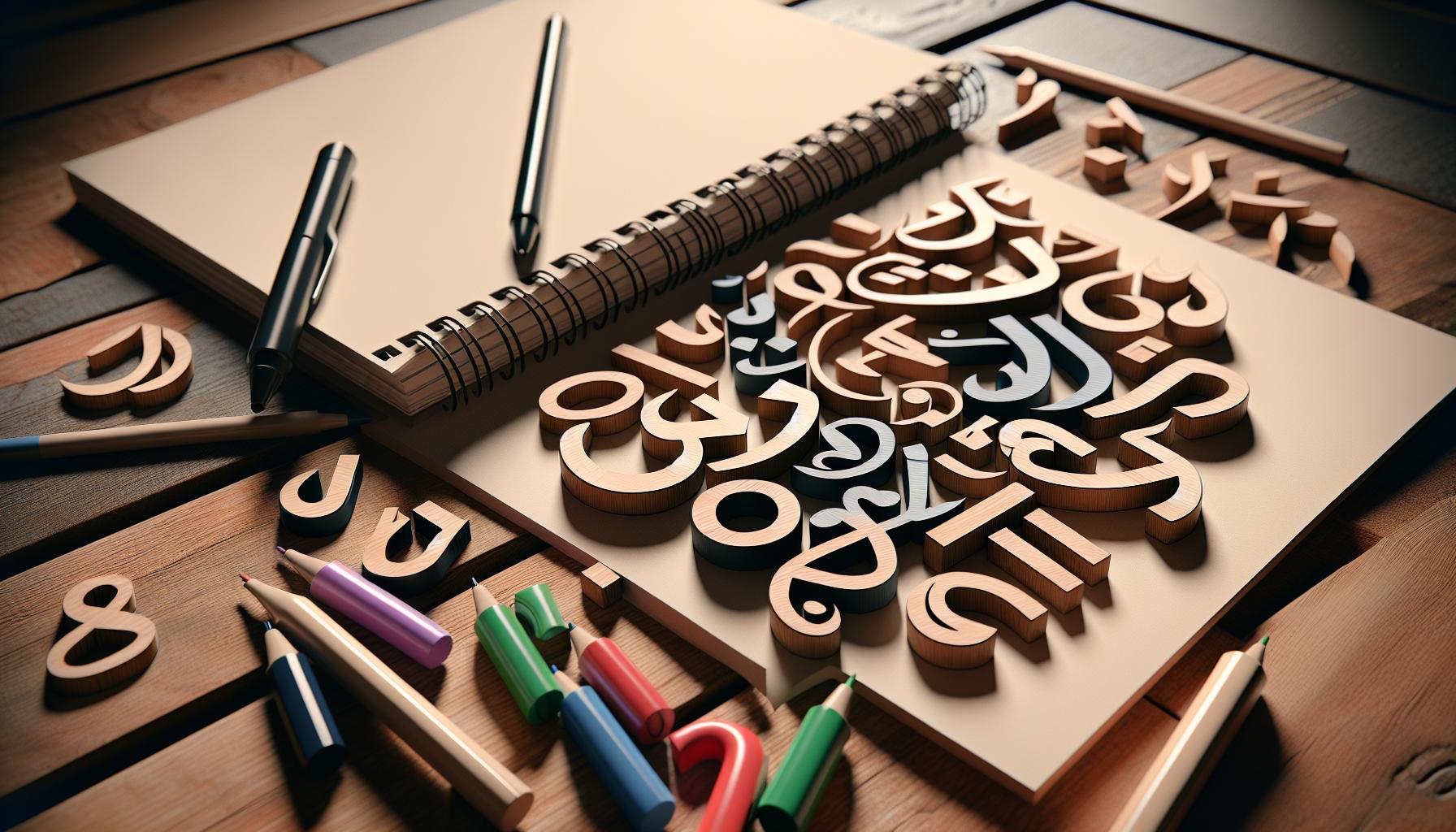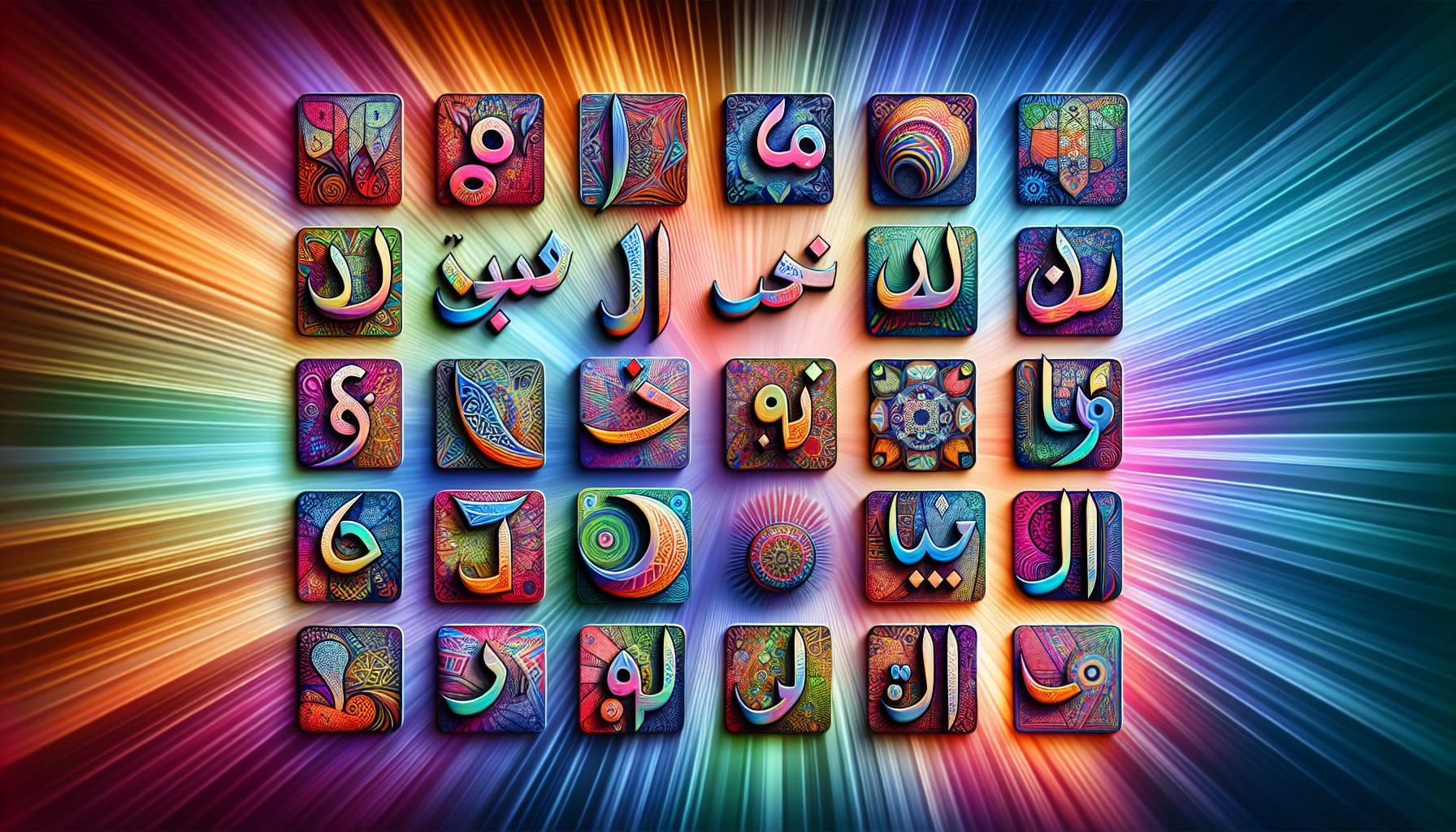Learning the Arabic alphabet might seem as daunting as trying to decipher ancient hieroglyphics, but it’s actually a fascinating journey into one of the world’s most elegant writing systems. With 28 letters that dance gracefully from right to left, Arabic script has captivated scholars, artists, and language enthusiasts for centuries.
Unlike its Latin counterpart, the Arabic alphabet transforms like a chameleon – each letter changes its shape depending on its position in a word. It’s like playing with linguistic Legos, where pieces connect differently to create beautiful flowing patterns. Whether someone’s interested in reading the Quran, exploring Middle Eastern culture, or simply adding another language to their repertoire, mastering these enchanting characters opens doors to a rich linguistic heritage shared by over 400 million people worldwide.
Arabic Alphabet: A to Z
The Arabic writing system represents over 1,500 years of linguistic evolution. Its distinctive cursive script forms an integral part of Islamic art and calligraphy.
Origins and History
The arabic alphabet: a to z emerged in the 4th century CE from Nabataean script, a descendant of Aramaic writing. Early Arabic inscriptions date back to 512 CE in Syria, showing the script’s initial development. The standardization of Arabic writing occurred during the Umayyad Caliphate (661-750 CE) when diacritical marks were introduced to distinguish similar letters. This development coincided with the spread of Islam, as the need to preserve Quranic texts drove improvements in writing accuracy. The system evolved from basic shapes to sophisticated calligraphic styles like Kufic, Naskh and Thuluth.
Writing Direction and Style
Arabic text flows from right to left with letters connecting horizontally along a baseline. Letters transform their appearance based on their position: initial, medial, final or isolated. The arabic alphabet: a to z script uses 18 distinct shapes to create its 28 letters through the addition of dots above or below the base forms. Arabic calligraphy incorporates specific proportional rules called “Al-Khatt” that determine letter spacing and size relationships. Modern Arabic typography maintains these traditional principles while adapting to digital formats through specialized fonts and rendering systems.
Basic Arabic Letter Forms

Arabic letters exhibit four distinct shapes depending on their position within a word, making the script highly adaptable and flowing.
Isolated Letters
Arabic contains 28 basic letters written in their isolated form when they stand alone. Each letter represents a single consonant sound with three short vowels indicated through diacritical marks above or below the letter. The isolated forms serve as the foundational shapes that learners memorize first. Arabic letters include distinctive shapes like ا (alif), ب (baa), and ت (taa), each with unique dots or marks that distinguish similar-looking letters from one another. These isolated forms appear in dictionaries word entries for reference.
Connected Forms
Arabic letters transform when connected within words, taking initial, medial or final positions. The initial form appears at the word’s beginning, connecting only to the following letter. Medial forms connect on both sides while final forms link only to the preceding letter. Letters like ع (ayn) display dramatic shape changes: عـ (initial) ـعـ (medial) ـع (final). Six letters – ا د ذ ر ز و – only connect to preceding letters due to their distinctive shapes. This connecting system creates the characteristic cursive flow of Arabic script.
Consonants in the Arabic Alphabet

The arabic alphabet: a to z consists of 28 consonant letters, each representing distinct sounds. These consonants form the foundation of Arabic pronunciation and writing systems, with variations in pronunciation across different Arabic-speaking regions.
Common Consonant Sounds
Arabic features 15 consonants that share similarities with English sounds: ب (b), ت (t), ج (j), د (d), ر (r), س (s), ش (sh), ف (f), ك (k), ل (l), م (m), ن (n), ه (h), و (w), ي (y). These letters produce familiar phonetic sounds:
| Letter | Sound | English Example |
|---|---|---|
| ب | b | “book” |
| ت | t | “table” |
| م | m | “moon” |
| ن | n | “note” |
| ل | l | “light” |
| Letter | Description | Pronunciation Point |
|---|---|---|
| ح | Deep throat sound | Pharyngeal |
| ع | Voiced pharyngeal | Back of throat |
| ق | Deep k sound | Uvular |
| ص | Emphatic s | Dental |
| ط | Emphatic t | Dental |
Arabic Vowels and Diacritical Marks

Arabic vowels and diacritical marks play a crucial role in pronunciation and meaning. These marks appear above or below letters to indicate precise sounds and grammatical functions.
Short Vowels
Arabic features three essential short vowels: fatha (َ), kasra (ِ), and damma (ُ). Fatha creates an ‘a’ sound, appearing as a small diagonal line above letters. Kasra produces an ‘i’ sound, shown as a small diagonal line beneath letters. Damma generates a ‘u’ sound, represented by a small loop above letters. These marks guide readers to pronounce words correctly, distinguishing between similar words like كَتَبَ (kataba – he wrote) and كُتِبَ (kutiba – it was written).
Long Vowels
Long vowels in Arabic consist of three letters: ا (alif), و (waw), and ي (ya). Alif extends the ‘a’ sound, creating ‘aa’ as in كتاب (kitaab – book). Waw lengthens the ‘u’ sound, forming ‘uu’ as in نور (nuur – light). Ya stretches the ‘i’ sound, producing ‘ii’ as in كريم (kariim – generous). These letters combine with short vowels to create distinct pronunciation patterns in Arabic words.
Other Essential Marks
Arabic employs additional diacritical marks for precise pronunciation. Sukun (ْ) indicates the absence of a vowel sound. Shadda (ّ) doubles consonant sounds, appearing above letters. Tanween adds nunation marks that create ‘an,’ ‘in,’ or ‘un’ sounds at word endings. Hamza (ء) represents a glottal stop sound. Madda (آ) combines hamza with alif to produce a prolonged ‘aa’ sound. These marks ensure accurate reading comprehension across Arabic texts.
Learning to Write Arabic Letters
Writing arabic alphabet: a to z requires attention to detail and proper technique. The writing direction flows from right to left with letters connecting horizontally to form words.
Proper Letter Formation
Arabic letter formation follows specific rules for maintaining proportions and achieving aesthetic balance. Each letter consists of distinct components: the base shape, dots or diacritical marks, and connecting strokes. Letters maintain specific height-to-width ratios: tall letters like ا (alif) extend three times higher than short letters like ب (ba). The baseline serves as an anchor point for letter placement, with letters sitting either on or below it. Dots play a crucial role in distinguishing between similar letters: ب (ba) has one dot below, ت (ta) has two dots above, and ث (tha) has three dots above.
Stroke Order and Technique
Arabic writing demands precise stroke sequences to create authentic letter shapes. The pen grip stays consistent at a 45-degree angle to produce the characteristic thick and thin strokes. Primary strokes move from right to left or top to bottom, starting with the main body of each letter. Secondary elements like dots add last after completing the letter’s basic structure. Connecting strokes link compatible letters seamlessly through horizontal lines at the baseline. The writing instrument affects stroke quality: traditional reed pens create varied line weights while modern pens require adjusted pressure to achieve similar effects.
Common Letter Combinations
Arabic letters combine in specific patterns to form words, creating distinct visual patterns that enhance the language’s flowing script. Each letter adapts its shape based on its position within a word, following established connection rules.
Initial Position
Arabic letters in the initial position connect to subsequent letters, forming the beginning of words. Six letters (ا، د، ذ، ر، ز، و) connect only from the right side, while the remaining 22 letters connect from both sides. The initial form modifies the basic shape to create a smooth transition to the following letter, as seen in combinations like بـ (ba) and تـ (ta). Letters maintain their essential characteristics in the initial position while adapting their connecting strokes to blend seamlessly with adjacent letters.
Medial and Final Positions
Arabic letters in medial positions connect on both sides, creating fluid transitions between characters. The final position marks the end of a word, connecting only to the preceding letter. In medial positions, letters like ـعـ (ayn) transform significantly from their isolated forms. Final positions often feature decorative extensions called kashidas, elongating the connecting line between letters. Common medial combinations include ـحـ (ha) ـمـ (meem) while final combinations showcase distinctive forms like ـط (taa) ـق (qaf).
Tips for Mastering the Arabic Alphabet
Learning the arabic alphabet: a to z requires structured practice methods combined with awareness of potential pitfalls. These strategies help develop proficiency in reading writing Arabic letters with proper form technique.
Practice Methods
- Write each letter 20 times in its isolated form before attempting connections
- Record pronunciation of letters using a voice recorder to compare with native speakers
- Create flashcards displaying different letter positions (initial medial final)
- Practice writing words containing similar-looking letters like ح خ ج
- Use dotted practice sheets to maintain consistent letter proportions
- Trace letters from calligraphy samples to understand proper stroke order
- Group letters by similar shapes to learn distinguishing features
- Complete daily writing exercises focusing on one letter family at a time
- Incorrect stroke direction particularly with circular letters like م و ف
- Improper letter spacing leads to unclear word formations
- Missing dots or placing them incorrectly changes letter meanings
- Inconsistent letter sizes disrupt visual flow of text
- Wrong connecting points between letters break word structure
- Mixing up similar letters such as ب ت ث due to dot placement
- Writing letters in isolation instead of proper connected form
- Neglecting proper proportions between letter parts
- Adding unnecessary flourishes that alter letter recognition
- Rushing through practice without mastering basic shapes
Arabic Learning Journey
The arabic alphabet: a to z stands as a remarkable testament to human ingenuity in written communication. Its elegant script carries centuries of cultural significance while serving as a gateway to understanding one of the world’s most widely spoken languages.
Learning the arabic alphabet: a to z opens doors to rich literary traditions artistic expression and meaningful connections with millions of Arabic speakers worldwide. With dedication practice and proper guidance anyone can master this beautiful writing system that continues to inspire and connect people across generations and cultures.
For those embarking on their Arabic learning journey the reward extends far beyond mere literacy – it’s an invitation to explore a world of profound cultural and spiritual significance.

